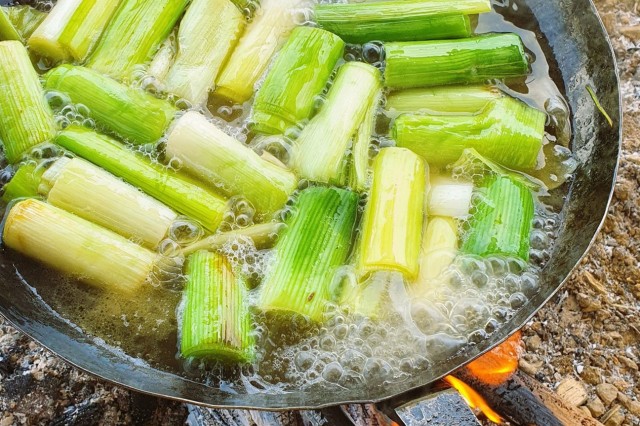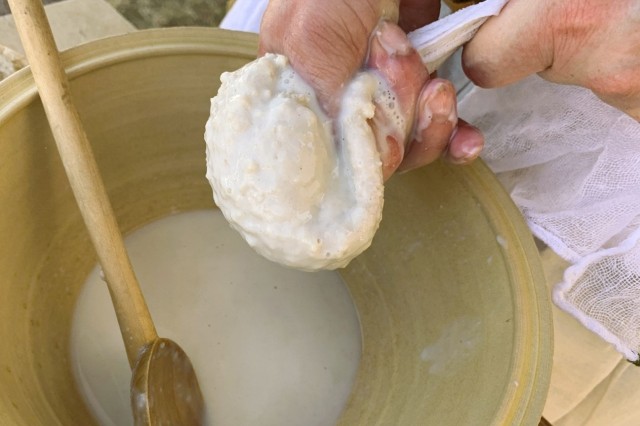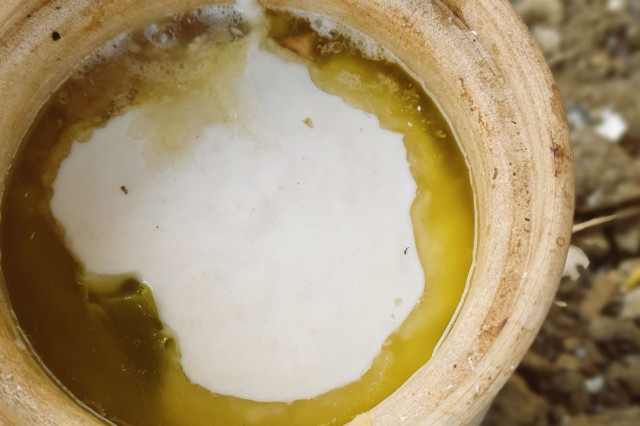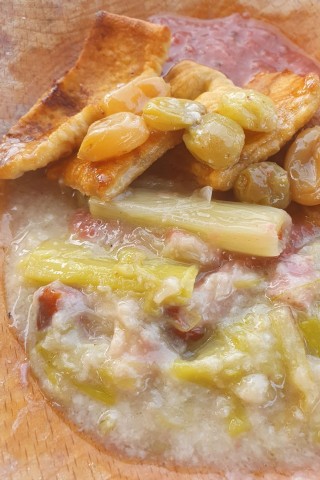What is the taste of the Middle Ages?
In search of the taste of the Middle Ages - Part 2
Cooking like in the Middle Ages - How does it work?
A modern kitchen is not suitable for medieval cooking. Basically, the kitchen equipment differs not functionally, but in technology and material considerably. In order to "reconstruct" the taste of the Middle Ages under the most historical conditions possible, reconstructions of a kitchen equipment based on finds, pictorial and written sources are needed.
Cooking and baking follow consistent laws. Even without quantities in the recipe, the ratios of the ingredients to each other and the corresponding cooking times are always the same. In other words, the quantities of ingredients and the cooking times are proportional, or in the words of great-grandmothers: "You will see it!" This sentence, which sounds so little scientific, describes exactly the professional experience of cooks.
In the recipes of the Middle Ages, various cooking methods are mentioned that still exist today and can be used in re-cooking. Handling the cooking fire needs some practice, but is possible without any problems and with consistently high quality of the finished dish.1, 2
From the recipe can be seen the following ingredients, utensils needed and preparation technique:
Ingredients: Leeks, lard, water, milk, white bread, more lard and pork.
Needed are: Cutting utensils, pan, a colander, a cheesecloth, a bowl and a clay pot.
The work instructions result in: Cut the leeks into finger-length pieces, sauté them in a pan and deglaze with water. Drain the leeks and put them in a clay pot. Strain white bread and milk through a cloth and pour it on the leeks. Add lard. Boil together with pork.
The milk bread mixture works like a sauce thickener. Due to the chosen salted pork, the recipe does not require additional salt.
Sources and literature:
1) Vgl. Andreas Klumpp; Culina Historica — Archäologie und Kochbuchforschung in EXPERIMENTELLE ARCHÄOLOGIE IN EUROPA BILANZ 2015, S. 183 ff
2) Vgl. Andreas Klumpp; Culina Historica – Möglichkeiten und Grenzen zur Rekonstruktion einer historischen Geschmackswelt in: Der Koch ist der bessere Arzt, Mediävistik zwischen Forschung, Lehre und Öffentlichkeit, Winfried Hofmeister (Hrsg), 2014, S. 253 ff
Equipment:
Replicas:
- Cooking pots after finds from Frankfurt am Main, Germany
- bowls based on finds from Freiburg and Bad Windsheim, Germany
(all made by Anna Axtmann)
Realisation and photos:
Claudia Zimmermann







